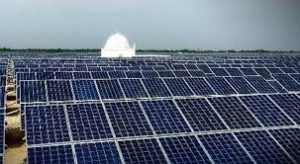‘No country is able to cope alone’: EU Commissioner for Crisis Management

Call it the “crisis crisis”. A record surge in the number and frequency of extreme climate events afflicting millions of human beings is stretching Europe’s disaster response system to the limit, a top EU official has warned. Requests for emergency assistance from the European Union’s humanitarian aid reserves have spiked some 400 percent in the past couple of years, amid a cascading succession of wildfires, floods and droughts that have ravaged large swathes of Europe, Jenaz Lenarcic, the European Commissioner for Crisis Management, told Newswire.
“We have never before experienced so many crises in such a short time, and many of them are the consequence of climate change,” said Lenarcic, a Slovenian diplomat who has served since 2019 in the European Commission led by Ursula von der Leyen.
Nearly 300 million people in 72 countries will need humanitarian assistance and protection in 2024, according to UN figures.
Wildfires and floods
Last year alone, Europe was battered by extreme weather events that ranged from devastating flooding in Slovenia that killed at least six people, to deadly wildfires in Greece and scorching drought in Spain.
Adding to the concerns, last August the so-called EU Civil Protection Mechanism – which coordinates the response to natural and man-made disasters at the 27-member EU level – took an unprecedented step when it was activated twice in a single day for the first time, in response to flooding across two-thirds of Slovenia and wildfires in Cyprus.
The climate change-related events are competing for EU humanitarian aid with health crises, natural hazards, the burgeoning needs of migrants and refugees, and wars and conflicts from Ukraine and Gaza, to Sudan, Myanmar and Yemen.
“So far, we have been able to cope,” said Lenarcic, referring to the climate-induced emergencies.
A ‘new normal’
“But the fact is that when we look at the future, we need to understand that this is a new normal. This requires that we adapt, that we pool our resources, because one lesson we have learned over these years of perpetual and constant crisis is that no country on its own is able to cope.”
Lenarcic added that fire seasons are starting earlier, and ending later, as well as spreading to areas that in the past were not known for wildfires, such as Central and Northern Europe.
He acknowledged that even the best-equipped states can lack the capacity to mount a sufficient response to disasters – in which case, they turn to the EU for help.
Stepping up aid to Gaza
On another front, Lenarcic said “the humanitarian needs have exploded” in the Gaza Strip, where the territory’s health ministry has reported more than 25,000 deaths and more than 60,000 injured as a result of the Israeli military operation in the territory following the October 7 surprise attack by Hamas on Israel. Israeli authorities say that attack killed some 1,200 people.
The EU plans to provide €125 million in humanitarian aid to the Palestinian people in Gaza and the West Bank in 2024, after quadrupling its aid last year, Lenarcic said.
He underlined the challenges the EU is facing in getting the aid into Gaza, where there are only two entry points for humanitarian deliveries, and then distributing it to the almost 2 million displaced civilians in dire need.
“What we have been able to do so far, is still not enough.”
Lenarcic dismissed suggestions that the Gaza relief effort was drawing the EU’s attention away from Ukraine, where Russia’s war of aggression is about to mark its second anniversary since Moscow’s full-fledged invasion on February 24, 2022.
“We are a global humanitarian donor,” he said. “For us, human life is of equal value anywhere in the world.”





